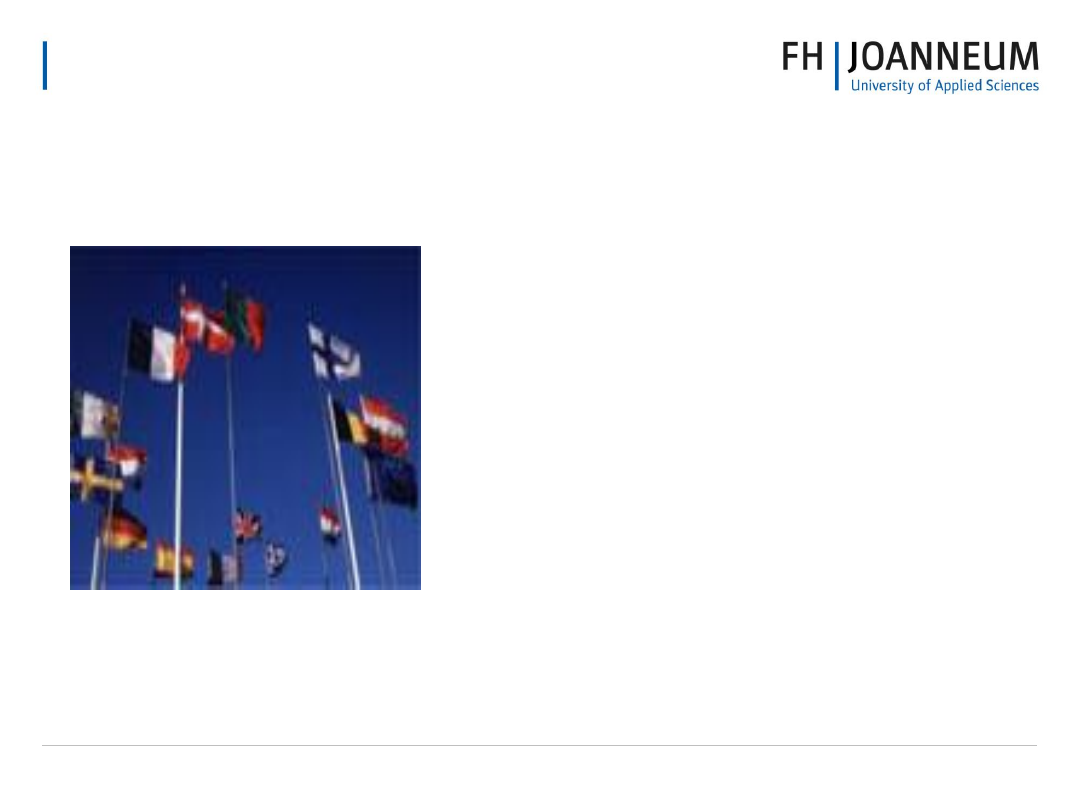ВУЗ: Не указан
Категория: Не указан
Дисциплина: Не указана
Добавлен: 07.04.2021
Просмотров: 167
Скачиваний: 1
www.fh-joanneum.at
MANAGEMENT
•
Much of the EU’s hesitancy was eliminated in June 1994, when the
European Council decided at their 1993 Copenhagen meeting that
"the associated countries in CEE that so desire shall become
members of the European Union."
•
Throughout the early 1990s, EFTA followed a policy of
"parallelism" with the EU concerning East-West ties.
–
That is, as soon as a CEEC had an EA with the EU, EFTA quickly negotiated an
EA-like agreements.
–
Due to disagreements in EFTA over the pace of market opening to the East,
several EFTAns signed bilateral deals with several CEECs.
CEE’s Trade Arrangements (5)
www.fh-joanneum.at
MANAGEMENT
The candidate country has achieved stability of institutions guaranteeing
democracy, the rule of law, human rights and respect for and protection of
minorities
The candidate country has the existence of a functioning market economy,
as well as the capacity to cope with competitive pressure and market
forces within the Union.
The candidate country has the ability to take on the obligations of
membership, including adherence to the aims of political, economic and
monetary union.
What Does it Take to qualify for Membership in the EU:

www.fh-joanneum.at
MANAGEMENT
ENLARGEMENT:
10 more countries became EU Member States in 2004
country - date of EU application
•
Cyprus - 3 July 1990
•
Malta - 16 July 1990
•
Hungary - 31 March 1994
•
Poland - 5 April 1994
•
Romania - 22 June 1995
•
Slovakia - 27 June 1995
•
Latvia - 13 October 1995
•
Estonia - 24 November 1995
•
Lithuania - 8 December 1995
•
Bulgaria - 14 December 1995
•
Czech Republic
- 17 January 1996
•
Slovenia - 10 June 1996
www.fh-joanneum.at
MANAGEMENT
HOURLY LABOUR COSTS, 2003
Manufacturing, in EUR – International comparison
3.2
3.3
4.0
4.3
7.0
7.8
10.2
16.0
16.7
16.9
18.1
18.3
18.7
19.9
20.2
20.2
21.2
21.3
22.8
23.2
23.8
25.6
27.1
27.3
28.2
Slovakia
Poland
Hungary
Czech
Portugal
SLOVENIA
Greece
Spain
Italy
East Germany
Ireland
Japan
UK
USA
Finland
France
Luxemburg
Austria
Sweden
Netherlands
Belgium
Switzerland
West Germany
Denmark
Norway
Source: IW-Koeln, August 2004; for Slovenia SKEP GZS
SKEP GZS
www.fh-joanneum.at
MANAGEMENT
AFTER ACCESSION
•
Impact of EU accession is difficult to measure after only two years and it
corresponds with effects of globalization
•
Positive effects
:
–
simplification of documentary flows (no more customs procedures)
–
increased growth due to positive expectations,
–
More stable macroeconomic environment
–
Increased trade with old-EU countries
–
Better representation of interests in Brussels
•
Negative effects
:
–
Negative trends in labour intensive sector, food processing industry and
textile industry – BUT THIS IS A PROBLEM OF GLOBALISATION.